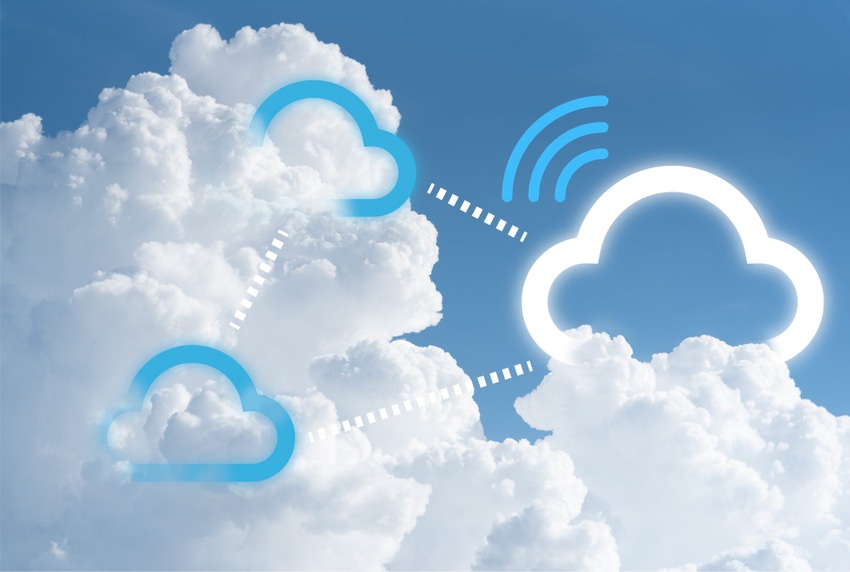SASE: The Key to Mitigating Business Transformation Risk
MSPs can leverage SASE to help clients mitigate new cybersecurity risks as they embrace cloud technology.
February 22, 2021

Sponsored by Barracuda MSP
Last year, business transformation efforts took on a whole new dimension. The global health crisis upended markets and supply chains, disrupted manufacturing operations, and pushed many companies (ready or not) into remote work scenarios and cloud-based workflows.
For some, this meant existing transformation initiatives were suddenly accelerated and stress-tested–everyone got a good look at just how cloud-ready their vendors, applications and employees really were. Others saw ongoing projects grind to a halt while they took steps to adjust. Companies’ ability to embrace the opportunities presented by this abrupt shift, and to adapt and transform to meet the challenges of this new reality, was critical to surviving the harsh business conditions of 2020.
More specifically, cloud computing has been a lifesaver for SMBs during these unprecedented times. According to the SMB Group’s 2021 Top 10 SMB Technology Trends, more than 80% of respondents said cloud-based business applications have been valuable in sustaining their business. Thirty-seven percent noted that the pandemic has made them more likely to choose a cloud solution for new application investments.
Still, every transformation (planned and unplanned) creates risk. Cloud-based applications and services are playing a more significant role than ever before. At the same time, however, they have vastly increased the threat vector for most companies. Cybercriminals quickly grasped that the shift to remote work and cloud applications presented an opportunity for them to thrive, as well.
According to the SMB Group study, top security challenges SMBs face in managing remote workforces include:
Home/public Wi-Fi network security (64%)
Employees accessing apps and data from personal, unmanaged devices (56%)
Lack of visibility and control (50%)
Securing sensitive company data (48%)
User awareness and training (42%)
Added costs for security solutions (21%)
Non-compliance with regulatory requirements (19%)
MSPs have stepped up to help their clients navigate the transitions they made in 2020 and are now well-positioned to further enable business transformation in 2021 by assisting them in managing the risk created by the shift to cloud computing. But how can MSPs help mitigate that risk?
In the past, organizations could block threats by identifying suspicious IP addresses or domains. Bad actors have become more sophisticated in their attacks. They’re now building all kinds of botnets, like TrickBot or IP storm, for example, which target IoT devices. Cybercriminals can breach a computer or even a cloud infrastructure with these latest attacks and weaponize them against users.
SASE = SD-WAN + Security as a Service
MSPs need to help clients re-focus on cybersecurity now that they’re through the fire-drill approach that marked much of 2020 for many organizations. That means assisting clients in evaluating the new risks that accompany the shift to the cloud and adopting endpoint-focused security solutions. One strategy MSPs should adopt to protect their clients better is Secure Access Service Edge (SASE) technology, which secures devices at the edge of the distributed network.
The SASE approach combines an SD-WAN (software-defined wide area network) with security delivered as a service. This enables a zero-trust process that bases access on the user, device and application rather than the IP address. In the emerging distributed IT environment that’s become the norm over the past year, SASE can help lock down access to networks and applications that otherwise open themselves up to new levels of cyber-attacks.
Clients need security tools that can scale to meet these emerging needs and qualified cybersecurity professionals who can monitor their networks leveraging automated, AI-driven tools to spot suspicious activity. They also need support and guidance to understand the risks associated with their business transformation fully, learn how those risks can be mitigated and see why the cloud requires a different security approach.
The cloud’s shift has transformed and redefined the network edge and moved the focus away from the enterprise data center. Secure access requires new approaches to identifying edge users and devices. MSPs have an opportunity to help clients securely embrace this type of digital transformation even as their networks expand. SASE can help provide this in a way that reduces security complexity and costs.
The coming year will require MSPs and their clients to take the lessons of 2020 to heart to succeed and grow in a dynamic new business environment. Migrating to the cloud will help clients increase their flexibility and responsiveness, which will be critical for survival. By helping them secure their data and applications–regardless of how and from where employees are accessing them–MSPs can ensure they will continue earning the title “trusted advisor” even as their clients’ business needs change.
Brian Babineau is Senior Vice President and General Manager for Barracuda MSP. In this role, he is responsible for the company’s managed services business, a dedicated team focused on enabling partners to easily deliver affordable IT solutions to customers.
Read more about:
MSPsAbout the Author(s)
You May Also Like


